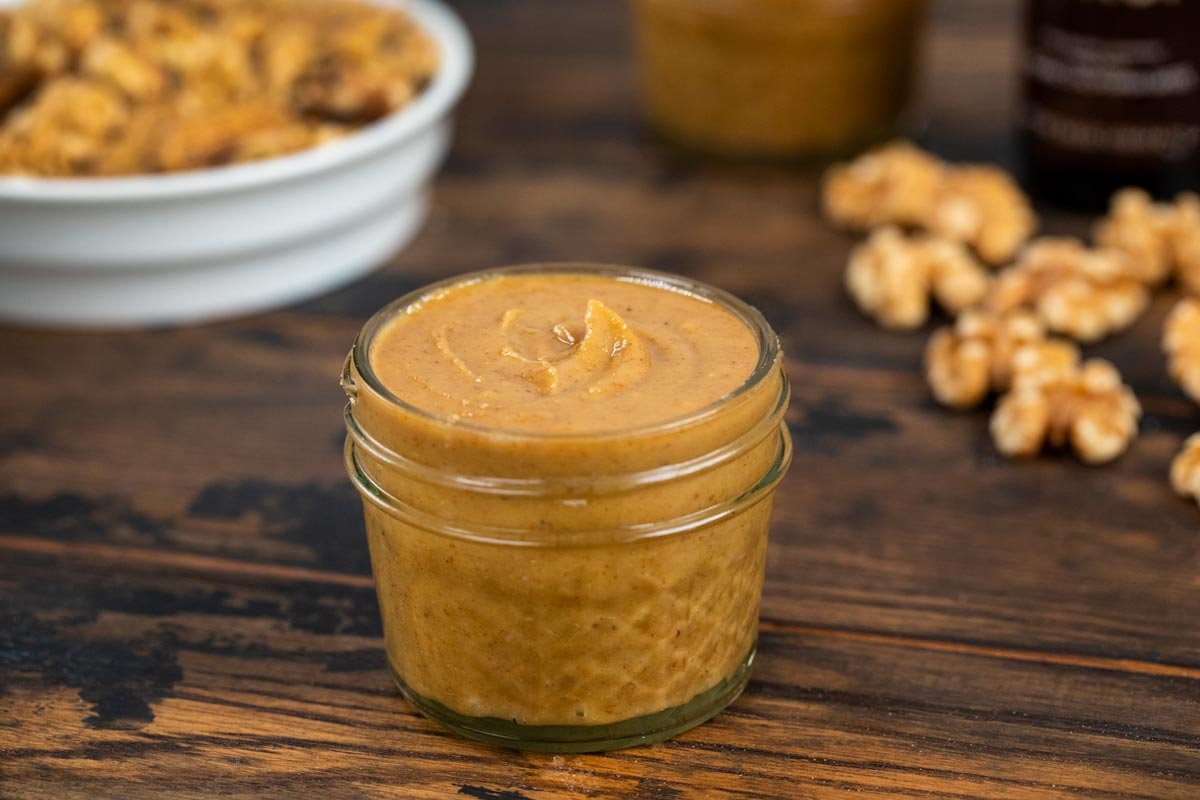How to Make Walnut Butter at Home and Its Amazing Health Benefits

How to Make Walnut Butter
Making walnut butter at home is simple and requires minimal ingredients. Here’s a step-by-step guide:
Ingredients:
- 1-2 cups of raw walnuts (preferably organic)
- A pinch of salt (optional)
- 1-2 tablespoons of a healthy oil (e.g., coconut oil, olive oil, or walnut oil) for a smoother texture (optional)
- Sweetener (optional) like honey or maple syrup for a slight sweetness (optional)
Instructions:
- Toast the Walnuts (Optional):
- Preheat the oven to 350°F (175°C).
- Spread the walnuts evenly on a baking sheet.
- Toast them for about 8-10 minutes, stirring once halfway through. This step enhances the flavor, but it’s optional if you prefer raw walnut butter.
- Blend the Walnuts:
- Place the walnuts (toasted or raw) into a high-speed blender or food processor.
- Pulse the walnuts a few times to break them into smaller pieces.
- Continue processing for 3-5 minutes, scraping down the sides of the bowl as needed. The walnuts will first turn into a crumbly texture, and eventually, they will turn into a creamy butter.
- If the mixture seems too thick or crumbly, add a little oil (such as walnut or coconut oil) to help with smoothness.
- Optional Additions:
- Add a pinch of salt or a sweetener (honey, maple syrup) to taste.
- Continue blending until you reach your desired consistency.
- Store:
- Transfer the walnut butter to an airtight jar or container and store it in the refrigerator. It can last for about 2-3 weeks.

Benefits of Walnut Butter
- Rich in Healthy Fats:
Walnuts are a great source of polyunsaturated fats, particularly omega-3 fatty acids, which support brain health and reduce inflammation. - Promotes Heart Health:
The healthy fats in walnut butter help improve cholesterol levels and support overall heart health. - High in Protein:
Walnuts provide a good amount of plant-based protein, which is essential for muscle repair and growth. - Good Source of Antioxidants:
Walnuts are rich in antioxidants like vitamin E, melatonin, and polyphenols, which protect cells from oxidative stress and inflammation. - Supports Brain Function:
The omega-3 fatty acids in walnut butter support cognitive function and may improve memory and focus, helping with mental clarity. - Rich in Fiber:
Walnut butter provides dietary fiber, which aids in digestion, promotes regular bowel movements, and supports gut health. - Helps Control Blood Sugar:
Due to its high fiber and healthy fat content, walnut butter can help regulate blood sugar levels, making it a good option for those managing diabetes or blood sugar imbalances. - Weight Management:
The combination of healthy fats, protein, and fiber in walnut butter helps keep you fuller for longer, which can help with weight management. - Supports Skin Health:
Walnuts contain vitamins and healthy fats that support skin hydration and may help in reducing the appearance of wrinkles and promoting skin elasticity. - Anti-inflammatory Properties:
The anti-inflammatory compounds in walnuts, including omega-3s, help reduce chronic inflammation, which can benefit conditions like arthritis.
How to Use Walnut Butter
- Spread it on toast or crackers for a delicious snack.
- Use it as a dip for fruits like apples or pears.
- Add it to smoothies for extra creaminess and nutrition.
- Incorporate it into baked goods like muffins or cookies.
- Stir it into oatmeal or yogurt for added flavor and nutrients.
Conclusion:
Walnut butter is a versatile and nutritious spread that offers a range of health benefits, from improving brain function to supporting heart health. Making it at home is simple and can provide you with a healthy alternative to store-bought nut butters, which may contain additives and preservatives.




